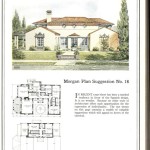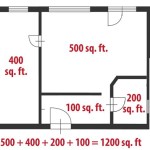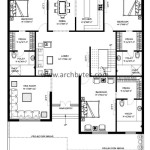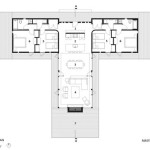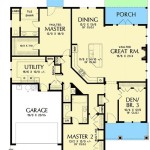How To Get a Floor Plan Of A Property
Obtaining a floor plan of a property can be crucial for various purposes, ranging from planning renovations and interior design to assessing property value and understanding spatial relationships within a building. A floor plan provides a visual representation of a building's layout, depicting the arrangement of rooms, walls, doors, windows, and other structural elements. There are several methods for acquiring a floor plan, each with its own advantages and limitations. This article explores these methods in detail, offering a comprehensive guide to securing this valuable document.
The availability of a floor plan often depends on the type of property, its age, and the record-keeping practices of local authorities and previous owners. Newly constructed homes typically have floor plans readily available as part of the building permit documentation. Older properties, conversely, may require more extensive research and investigation to locate existing plans or necessitate the creation of a new one.
1. Reviewing Existing Documentation
The first step in obtaining a floor plan is to explore existing documentation related to the property. This includes a thorough review of any records held by the current owner, mortgage lender, real estate agent, or local government authorities. The following sources are particularly relevant:
Property Deeds and Mortgage Documents: These documents, typically held by the property owner or the mortgage lender, may contain a basic floor plan or site plan. While these plans might not be as detailed as dedicated architectural blueprints, they can provide a general overview of the property's layout and dimensions. It's important to carefully examine all pages of these documents, as floor plans might be included as appendices or exhibits.
Real Estate Listings: If the property was recently listed for sale, the real estate listing may include a floor plan. Online real estate portals and brokerage websites often feature floor plans as part of the property's marketing materials. These plans are often created by professional photographers or floor plan companies and can provide a good representation of the property's layout. However, it's important to verify the accuracy of these plans, as they may not always be perfectly to scale or reflect recent renovations.
Building Permits and Architectural Plans: Local government authorities, such as city planning departments or building inspection offices, may maintain records of building permits and architectural plans for properties within their jurisdiction. These records can be a valuable source of floor plans, especially for properties that have undergone renovations or additions. To access these records, it is generally necessary to submit a formal request to the relevant government agency, providing the property address and any other relevant information. Access to these records may be subject to fees and approval processes.
Homeowner Associations (HOAs): For properties located within a homeowner association, the HOA may have access to floor plans or architectural drawings as part of their community records. Contacting the HOA management or reviewing their online resources could reveal available floor plans. HOAs often maintain records of approved construction projects and modifications, which may include detailed floor plans.
Previous Owners: Reaching out to previous owners of the property can be a worthwhile endeavor. They may have retained copies of floor plans or other documentation that could be helpful. Contact information for previous owners may be obtained through title companies or historical property records. While contacting previous owners may require some effort, it can be a valuable source of information, especially for older properties.
2. Creating a Floor Plan Through Measurement and Drawing
If existing floor plans cannot be located, the next option is to create a new floor plan by measuring the property and drawing it by hand or using computer-aided design (CAD) software. This requires careful measurement and attention to detail to ensure accuracy.
Manual Measurement and Drawing: This involves using a measuring tape, pencil, and graph paper to measure the dimensions of each room and the overall layout of the property. Start by measuring the length and width of each room, noting the location of doors, windows, and other architectural features. It is crucial to be precise and consistent with measurements. After gathering the necessary measurements, the floor plan can be drawn to scale on graph paper, ensuring that the proportions and relationships between rooms are accurately represented. While this method is cost-effective, it requires time, patience, and attention to detail to produce an accurate and professional-looking floor plan.
Using Digital Floor Plan Software: Numerous software programs are available that simplify the process of creating floor plans. These programs allow users to input measurements and automatically generate a scaled floor plan. Popular options include AutoCAD, SketchUp, and RoomSketcher. These programs often offer features such as drag-and-drop functionality, pre-designed furniture and appliance symbols, and the ability to create 3D models of the property. Using digital floor plan software can significantly reduce the time and effort required to create a floor plan, while also improving accuracy and professionalism. Many programs offer free trial periods, allowing users to test their features before committing to a purchase.
Laser Measurement Tools: Laser distance measurers can significantly improve the accuracy and speed of measuring a property. These devices use laser technology to measure distances with precision, reducing the risk of human error. Laser measurers are particularly useful for measuring large or complex spaces, such as multi-story buildings or irregularly shaped rooms. Some laser measurers can also connect to smartphone apps, allowing users to record measurements directly into a digital floor plan. While laser measurers represent an additional cost, they can be a worthwhile investment for creating accurate and professional floor plans.
Professional Floor Plan Services: Hiring a professional floor plan service is another option for creating a floor plan. These services typically use laser measurement tools and CAD software to create accurate and detailed floor plans. Professional floor plan services can be particularly useful for complex properties or when a high level of accuracy is required. They can also provide additional services such as 3D modeling and virtual tours. While professional floor plan services are more expensive than creating a floor plan manually, they offer the advantage of expertise and accuracy.
3. Utilizing Online Resources and Public Records
Several online resources and public records databases may contain information about property floor plans. While these resources may not always provide a complete floor plan, they can offer valuable insights into the property's layout and dimensions.
County Assessor Websites: Many county assessor websites provide access to property tax records, which may include basic information about the property's size, dimensions, and room count. While these records may not include a detailed floor plan, they can provide a general overview of the property's layout. Some county assessor websites may also provide access to historical property records, which could include architectural plans or building permits.
Online Property Databases: Several online property databases, such as Zillow, Trulia, and Redfin, aggregate information from various sources, including public records, real estate listings, and property tax assessments. These databases may contain floor plans or other information about the property's layout. However, it's important to verify the accuracy of this information, as it may not always be up-to-date or complete.
Historical Societies and Archives: Local historical societies and archives may possess records related to the property's history, including architectural plans or building permits. These records can be a valuable source of information for older properties. However, accessing these records may require a visit to the historical society or archive and may be subject to fees and restrictions.
Satellite Imagery and Mapping Services: Services like Google Earth and Bing Maps provide satellite imagery and aerial photographs of properties, which can be helpful in visualizing the property's layout and surroundings. While these images do not provide a detailed floor plan, they can offer a general sense of the property's size and shape. These services can also be used to identify potential obstacles or challenges related to the property, such as easements or setbacks.
Utilizing Municipal Websites: Many municipalities in developed countries have an online presence. Municipal websites may have valuable information pertaining to property. These websites may have zoning maps, planning documents and other public records that contain the information for specific properties. These resources can be valuable in the absence of a formal floorplan.
Obtaining a floor plan of a property may require a combination of research, measurement, and professional assistance. By exploring existing documentation, creating a new floor plan through measurement and drawing, and utilizing online resources and public records, it is possible to secure this valuable document and gain a comprehensive understanding of the property's layout and spatial relationships.

How Do I Get A Floor Plan For My Property

Floor Plans Learn How To Design And Plan

9 Ways To Find Floor Plans Of An Existing House Blueprints Archid

Site Plans What They Are And How To Create One

Where You Can Buy House Plans Live Home 3d

Site Plans What They Are And How To Create One

Boxbrownie Com Using Floor Plans To Your Property

How To Read A Floorplan Work Out If Property For Is Too Expensive Daily Mail

Maximise The Chances Of Finding A Buyer With Floorplan Property Blog

Floor Plans Learn How To Design And Plan
Related Posts

